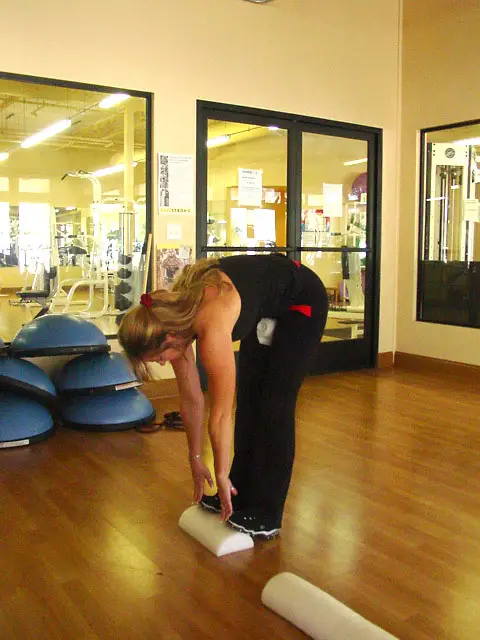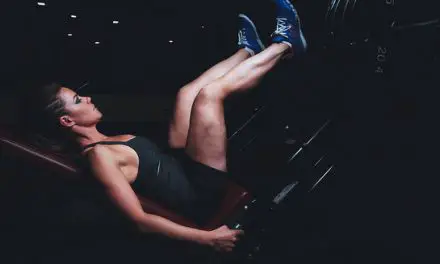What are the different types of stretching?
The type of stretching you use would depend on several factors including what exercise or sport you are doing, your physical fitness level, and lifestyle. For many people, stretching simply feels good and helps them feed more confident in exercise or sleep better.
Although some websites and textbooks state that there are seven different types of stretching, there are essentially two primary groups with each group having one or more subgroups that share similarities and significant differences.
These two groups include static and dynamic stretching.
Static stretching
Static stretching is probably the most familiar type of stretching, where you hold a stretch for about 20 to 30 seconds to the point of mild discomfort.
While many coaches and personal trainers would tell you to stretch before you workout or train, there’s currently no clear consensus on whether static stretching can reduce your risk of injury, improve strength and power output, or any significant benefits other than gaining a few extra centimeters of flexibility in your hamstrings.
There is some evidence, however, that static stretching could help increase muscle size with weight training, but the there needs to be more studies to replicate to confirm or disconfirm the relationship.

Photo: Nick Ng
Passive stretching
Passive stretching one of two types of static stretching, and there are two ways to do it. One is with another person where your partner holds the stretch for you as you relax—hence the term “passive.”
The other way is to use a support to hold that stretch, whether it’s with your hands, a wall, the ground, a chair, or a stability ball.

Photo: Nick Ng
Some say that isometric stretching is different type of stretching, when in fact, it’s under the umbrella of static stretching. This involves tensing your muscles for a period of time to stretch the opposite muscle group.
For example, if you’re stretching your chest, contract your back muscles and rear shoulder muscles by pulling your shoulder blades together by yourself or with another person’s help.
PNF stretching

Proprioceptive neuromuscular faciliation (PNF) is a type of passive stretching where you contract and stretch the muscle that you’re targeting. You can do this with a partner or by yourself with assistance from an exercise tool (e.g. strong elastic band) or just a wall.
PNF stretching is based on the ideas of autogenic inhibition and reciprocal inhibition. Autogenic inhibition is when you contract a muscle, the golgi tendon organ in the muscle is triggered to monitor the tension so that it can protect you from injury or damage. When the tension is too high, the golgi tendon organ sends a warning signal to your central nervous system to relax.
In reciprocal inhibition, the muscles on one side of a joint, use the muscles on the other side of the joint to improve motion. The muscle spindle senses the stretch and triggers relaxation of the muscle on the opposite side of the joint.
Hyperbolic stretching

Photo: Penny Goldberg
This is basically static stretching, branded as “hyperbolic stretching” where proponents claim that you can do the splits in four weeks of consistent training.
It has separate programs for men and women where members instantly get access to the videos and PDF file that shows the stretches.
While some of the claims, like providing stress relief and building muscle has some scant scientific evidence, the increased flexibility that you get from the program isn’t that different than what you may have learned in a high school P.E. class. You will get more flexible as long as you are consistent with your stretches.
Dynamic stretching
Dynamic stretching is the other major type of stretching that involves moving your joints within your full range of motion repetitively.
Although this is similar to ballistic stretching, where you bounce instead of controlling your movement, dynamic stretching is often used to prepare your body and mind for the upcoming sport or activity that you are going to do. Sample exercises include leg swings, running knee-ups, and push-ups with a twist.
Paul Ingraham of PainScience.com argues that dynamic stretching is not really stretching because it “doesn’t involve elongating muscles to the point of feeling significant tension for several seconds.”
Regardless of what it’s called, most sports science experts agree that dynamic stretching should be done before a workout rather than static stretching.

Photo: Nick Ng
Ballistic stretching
Don’t confuse this with dynamic stretching, even if it overlaps its features with the latter. Ballistic stretching involves quick, repetitive, bouncing movements. You may have seen this martial artists and gymnasts do this while warming up. Another difference is that ballistic stretching uses momentum to increase flexibility.

Photo by Ketut Subiyanto from Pexels
Does strength training increase flexibility?
You probably don’t need to stretch to increase your flexibility! A recent review of 11 studies with a total of 452 subjects and found that both strength training and stretching work just as well in increasing range of motion.
The researchers concluded that strength training and stretching “were not statistically different in [range of motion] improvements” in the short run.
It doesn’t really matter what strength exercises you do. Dr. José Afonso from the University of Porto in Portugal who led the research suggests that you do a variety of types of exericses to strengthen your body since each type has its benefits and drawbacks.
Because there’s a lack of a strong consensus about what stretching can and cannot do, and which type of stretching is best under certain circumstances, you should explore what type works for you and question claims about stretching.
Some say that there you should not stretch before you do power and strength activities, while some say that it depends on the sport that you are playing, your physical condition, and expectations.
Nobody really argues about stretching if you do it because it feels good. Therapists and trainers should cater to each patient’s or client’s needs instead of making generalizations for everyone.






